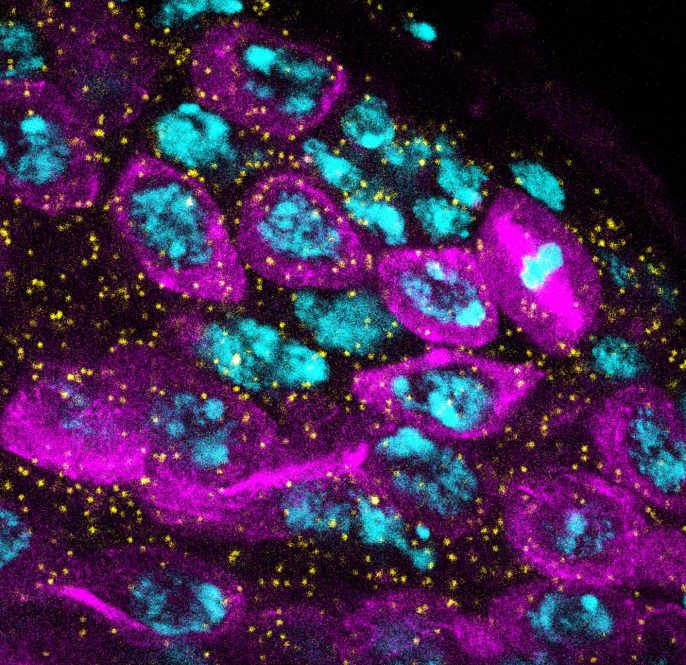Everyone has two copies of every gene; one from each parent. Sometimes we need both copies to function, sometimes only one, and sometimes none. How our cells know when to silence a gene is mysterious. Now, UConn School of Medicine cell biologists Matthew Antel and Mayu Inaba show how the silencing process works in one gene, Stat92E, in fruit flies. Fruit fly stem cells (cells capable of turning into any other type of cell the body needs) keep the two copies of Stat92E paired side-by-side. This keeps both copies working. But when the stem cell divides and the offspring cell starts to change into specific cell types—in this case, sperm—the paired genes separate, and both copies go silent. The researchers propose in the 9 July issue of Nature Communications that the silencing effect of unpairing the genes is one method cells use to quickly turn off genes they don’t need.
The image shows germ line stem cells dividing into sperm in a fruit fly. The yellow dots show the activity of Stat92E. The number of yellow dots decreases as the cells mature into sperm, showing how Stat92E gradually quiets.



